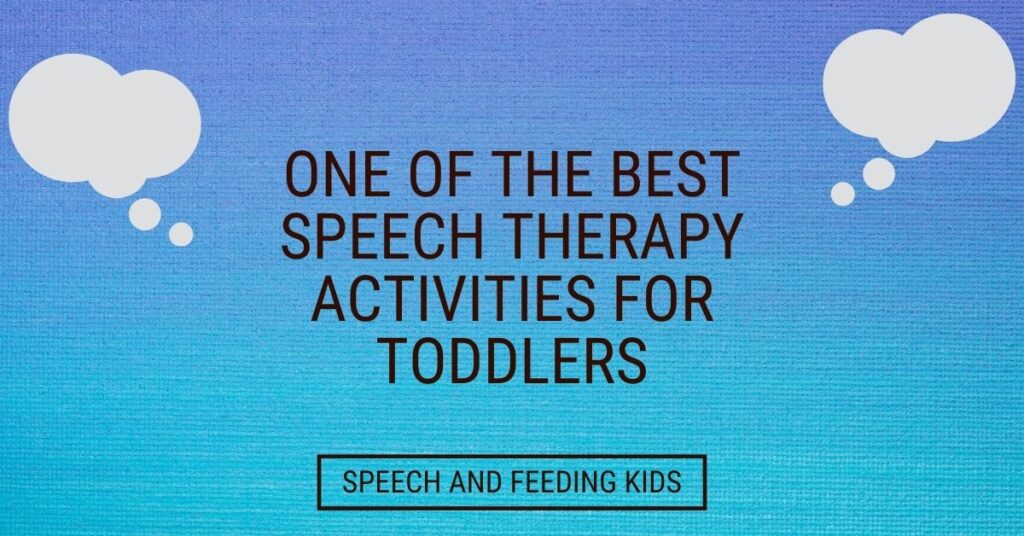Hide and seek with chunky puzzles is one of the most requested speech therapy activities I do in sessions with my toddlers and preschool aged clients. This article will show you how to use chunky puzzle pieces to teach your toddler while they run around and have fun. So many developmental skills can be worked on within this activity. Think of how you can take the premise of this activity and customize is to your child’s level of speech and language development.
Goals: Speech, language, social skill, fine motor, gross motor
Location: Anywhere in the house that has a place to put the puzzle piece out of reach of the child
Materials: Chunky puzzle
Premise of the activity: Take the puzzle pieces and place them out of reach throughout the room. Place them on window sills, shelves, top of door ways etc. The most important part is that the child cannot reach the piece without help from the adult.
I teach parents that there are two main ways they can set up the activity. One focuses more on talking (expressive language based), and one focuses more following directions (receptive language based). You can combine them once the child becomes familiar with the game.
There is also a third way specific to pointing and joint attention that I use with young children who are on the autism spectrum. I will also share this approach below.
This post may include affiliate links. As an Amazon Associate I earn from qualifying purchases. Read the full disclosure here.
Using chunky puzzles to work on expressive speech and language
The setup: Adult takes the puzzle pieces and place them out of reach but in sight of the child.
Place the empty puzzle board on the couch or chair.
If it is an animal puzzle, you can make up a silly story about how all the animals escaped the farm and how you need help finding them.
You can also have the child close their eyes and tell them not to look, some children really like the surprise of the game.
The action: Take the child by the hand and say, “I wonder where all of the pieces went?”
Walk the child over to the first piece and help them look towards the item.
Once they see it, make a shocked face and say something like, “my goodness! How did that cow get there?!”
The skill: This is the part that will be specific to your child. The object here is you will teach them to say or do something in order to be picked up to get the puzzle piece.
Here are some ideas you can try:
Model whichever one you chose 2 to 3 times using a sing-song voice, then pick the child up to get the piece.
– “Mommy/daddy” (naming parent)
– “Up” (action)
– Name of the puzzle piece “cow!” (labeling)
– “Give me” (requesting)
– Name of the object where the puzzle piece is placed (location e.g. door, window)
– “Give me + name of object” (combining words)
– “Go + object” (combining verb + noun)
– “Mommy give me + name of puzzle piece” (sentences)
– “So high!” (adjective)
– “Help” (requesting help)
After you model the target phrase, wait a couple seconds in silence to allow them to process and cue them to try and imitate what you just said.
The reward: After you’ve modeled 2 to 3 times, pick the child up and help them reach for the piece. Place them on the ground and help them run over to the board to return the piece to its home.
Repeat: Then take the child by the hand and say, “let’s go find another!”
Repeat this as many times as the child will tolerate or until you find all of the pieces. You may only get a couple pieces at first before you lose them. The next time try to get one more than the last.
Using chunky puzzles to work on receptive language
I play this game two different ways depending on the child and their ability to attend and follow directions.
Easier Version
The setup: Repeat the same setup as above. This time they have to locate a specific puzzle piece.
The action: You can say something like, “Ok let’s turn on our listening ears…Can you go find the cow?”, or “Where is the cow?” IF the child goes to the incorrect piece, point towards the correct piece and say, “hmm maybe the cow is over there?”
The skill: The child has to listen to your request, then go search and identify the correct piece. This is a great way to work on answering, “where” questions.
The reward: Same as above, pick them up or grab the piece and hand it to them. Then run them over to the puzzle board to put the piece in its home. You can also add tickles or a jump up on the couch as another level of excitement and engagement.
Repeat: Get down on the child’s level and repeat the question with a different puzzle piece, “now can you go find the ____?”
More Advanced Version
You tell the child where to place the puzzle piece and they have to follow the direction. This is a way to practice following multi-step directions. You’re having the child give up the puzzle piece here. You will need to add your own reward based on what your child likes.
The setup: All of the puzzle pieces are in the board on the couch. The adult has control of the board and pieces.
The action: Ask the child, “can you get the cow, and put it on the window?” If this is challenging at first, point to show the child the cow, and the window. Give as much support as needed at first
The skill: During this version the child has to listen to two specific directives – get cow/put on window. Next try, “get the horse and put it on the chair”. Give each animal a different location to use. While you’re giving direction, use simple and direct language.
The reward: Here you can use high fives, verbal praise “you did it!”, tickles, bubbles once the child places the puzzle piece in the correct area.
Joint Attention Version
Joint attention is the ability for two people to share an interest in one object at the same time. Children with autism often have a hard time engaging in joint attention during play.
The setup: Adult takes the puzzle pieces and place them out of reach but in sight of the child.
Place the empty puzzle board on the couch or chair.
The action: Hold the child in your arms, or get down at their eye level and point to the puzzle piece. With young/smaller children, I find holding them helps as you can really get your finger into their line of site in order to direct it to the puzzle piece.
The skill: They are looking at where you are pointing. You are telling them where to focus their attention to by pointing your finger. See if they can follow your point. Start with your finger almost touching the puzzle piece. Then slowly begin to move back to see if they can follow a distal point (the imaginary line between the end of your finger tip and the distant object you are pointing to). You can move your finger back 6 inches, then a foot, then a couple feet away as they progress.
The reward: The instant they look, give the child the puzzle piece with tickles or verbal praise. Have the child place the piece back on the board and repeat.
Good luck and have fun!
For more speech and language tips, follow Speech and Feeding Kids on YouTube.
About the Author
DRAKE HASTINGS M.S., CCC-SLP
Drake Hastings is a speech-language pathologist who specializes in speech, oral motor, and feeding therapy for kids. Drake has a passion for working with children and families while helping children achieve goals using a fun and motivating approach to learning.
Drake’s main areas of focus within the practice are feeding therapy, and speech (sound production) therapy. Drake has experience working with children who are diagnosed with Autism Spectrum Disorder, Apraxia of Speech, Dysarthria, Down Syndrome, and rare genetic disorders. Drake has experience working and collaborating with a wide variety of families and therapeutic team members while treating children of all ages.


